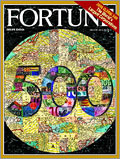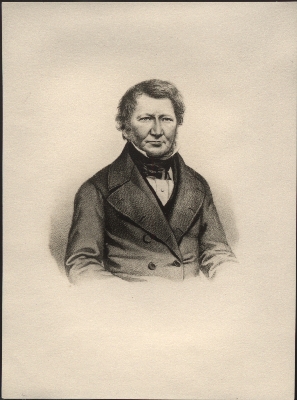
A language family is a group of languages related through descent from a common ancestral language or parental language, called the proto-language of that family. The term "family" reflects the tree model of language origination in historical linguistics, which makes use of a metaphor comparing languages to people in a biological family tree, or in a subsequent modification, to species in a phylogenetic tree of evolutionary taxonomy. Linguists therefore describe the daughter languages within a language family as being genetically related. The divergence of a proto-language into daughter languages typically occurs through geographical separation, with different regional dialects of the proto-language spoken by different speech communities undergoing different language changes and thus becoming distinct languages from each other.
M, or m, is the thirteenth letter in the Latin alphabet, used in the modern English alphabet, the alphabets of other western European languages and others worldwide. Its name in English is em, plural ems.

A physicist is a scientist who specializes in the field of physics, which encompasses the interactions of matter and energy at all length and time scales in the physical universe. Physicists generally are interested in the root or ultimate causes of phenomena, and usually frame their understanding in mathematical terms. They work across a wide range of research fields, spanning all length scales: from sub-atomic and particle physics, through biological physics, to cosmological length scales encompassing the universe as a whole. The field generally includes two types of physicists: experimental physicists who specialize in the observation of natural phenomena and the development and analysis of experiments, and theoretical physicists who specialize in mathematical modeling of physical systems to rationalize, explain and predict natural phenomena.

The Fortune 500 is an annual list compiled and published by Fortune magazine that ranks 500 of the largest United States corporations by total revenue for their respective fiscal years. The list includes publicly held companies, along with privately held companies for which revenues are publicly available. The concept of the Fortune 500 was created by Edgar P. Smith, a Fortune editor, and the first list was published in 1955. The Fortune 500 is more commonly used than its subset Fortune 100 or superset Fortune 1000.

A cousin is a relative that is the child of a parent's sibling, this is more specifically referred to as a first cousin.

Scorpio (♏︎) is the eighth astrological sign in the zodiac, originating from the constellation of Scorpius. It spans 210–240° ecliptic longitude. Under the tropical zodiac, the Sun transits this sign on average from October 23 to November 21. Depending on which zodiac system one uses, someone born under the influence of Scorpio may be called a Scorpio or a Scorpionic.

The Cecidomyiinae, commonly known as gall midges or gall gnats, is the largest subfamily in Cecidomyiidae with over 600 genera and more than 5000 described species. This subfamily is best known for its members that induce galls on plants, but there are also many species that are fungivores, parasitoids, or predators as maggots.

Opogona comptella is a moth of the family Tineidae. It is found from southern Queensland to Tasmania as well as in New Zealand.

Henry Shimer was a naturalist and physician in Mount Carroll, Illinois. He was also a teacher at the Mount Carroll Seminary, which later became Shimer College; he was the husband of the seminary's founder, Frances Shimer.

The nettle pouch gall develops in leaf veins, leaf petioles, flower stalks and sometimes the stem of Urtica dioica and Urtica urens. This structure is caused by the gall midge or gnat Dasineura urticae, also spelled Dasyneura urticae. Synonyms are Perrisia urticae and Cecidomyia urticae.

Dasineura crataegi, the hawthorn button-top gall-midge, is a dipteran gall-midge. It causes the hawthorn button-top gall, which develops in the terminal shoots of common hawthorn, Crataegus monogyna Jacq., Midland hawthorn C laevigata (Poir.) DC and their hybrid, C × media Bechst. Synonyms are Perrisia crataegi and Cecidomyia crataegi.
In the 10th edition of Systema Naturae, Carl Linnaeus classified the arthropods, including insects, arachnids and crustaceans, among his class "Insecta". Insects with simply two wings were brought together under the name Diptera.
Polysoma eumetalla is a moth of the family Gracillariidae. It is known from the Australian states of Queensland, New South Wales, South Australia, Tasmania and Victoria and from New Zealand.

Margaretta Hare Morris was an American entomologist. Morris and the astronomer Maria Mitchell were the first women elected to the American Association for the Advancement of Science in 1850. She was also the second woman elected to the Academy of Natural Sciences of Philadelphia in 1859, after Lucy Say.
Cecidomyia elegans is a species of gall midges in the tribe Cecidomyiini. It is found in Germany.

Johann Jacob Bremi-Wolf was a Swiss entomologist and Kunsthandwerker in Zürich.

The 90th Scripps National Spelling Bee was held at the Gaylord National Resort & Convention Center in National Harbor, Maryland, United States from May 30 to June 1, 2017, with "Bee Week" events running for spellers between May 28 and June 3, and televised coverage on May 31 and June 1. Ananya Vinay, 12, won the competition by successfully spelling "marocain" in the final round. In fact, she made history as she had placed 172nd place in the 2016 Scripps National Spelling Bee, and then she won the 2017 edition. There is a remarkable moment when Shourav Dasari correctly spelled "Mogollon" in five seconds.

Ampelomyia viticola, the grape tube gallmaker, is a species of gall midge found in the eastern United States and Canada. It produces green or bright red galls on new world grape vines.














